|
Sight Feed Generator Company During World War Two
West Alexandria, OH
1924-1960's as Sight Feed Generator Company
1960's-Current as Rexarc Interntaional
This page updated 8-6-2024.
During World War Two, the United States became
what was and is still known as the Arsenal of Democracy. When the
Arsenal of Democracy is discussed in current literature, the
American production of aircraft, vehicles, and ships is most widely
presented. During World War Two, the United States produced 52% of
the world's aircraft, 36% of the world's artillery, 48% of the world's
vehicles, and 66% of the world's ships. To accomplish this it took
huge companies, large factories, shipyards, and thousands of workers at
each location. However, there were also thousands of small
companies across the United States with limited resources that were also
important contributors to the war effort.
One such company was in the small village of
West Alexandria along U.S. 35 in west central Ohio. In 1945 the
Sight Feed Generator Company located in this small village had a work
force of 160 employees and a factory that contained approximately 50,000
square feet. While many companies during World War Two
manufactured war material unrelated to its previous peace time products,
the Sight Feed Generator Company continued to make its normal products,
acetylene gas generators. This is a technology with which I was
totally unfamiliar. Researching the information for this webpage
on the company was a true learning experience for me.
A
typical gas welding setup in the early 20th century did not entail oxygen
and acetylene cylinders shipped from a distribution plant. Instead,
welding operations drew acetylene directly from portable acetylene
generators. In 1924, a West Alexandria, OH local inventor, Will Swift,
and local business man, Carl Smith, had the idea of putting a Pyrex
viewport into the calcium carbide hopper for these portable acetylene
generators. This enabled operators to decide whether they had enough
fuel before starting a job, making the operators much more productive.
The
company’s first product, the Sight Feed acetylene generator, soon found
use in a variety of applications. Some of the firm’s products even
generated fuel for the acetylene lamps used during the U.S.’s
island-hopping campaign in World War II. The lamps required no
electricity, and they could quickly flare up as needed—for war planes
taxiing, taking off, and landing—before diminishing rapidly into
darkness.
By the
1960’s, the development team at the newly renamed company of Rexarc, had
developed a fully automatic generator that could be operated safely and
efficiently, as well as easily support plant expansions as they were
needed. Now renamed Rexarc International Inc., the company is in its
fourth generation of family ownership and still located on the site of
those original tobacco barns at 35 East Third Street, West Alexandria,
OH.
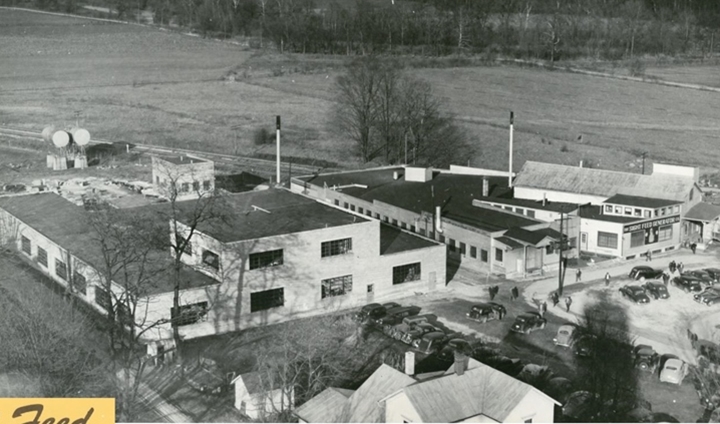
This image shows the Site Feed Generator
Company factory complex at 35 East Third Street, West Alexandria, OH.
Looking at the cars in the parking lot, this appears to be a late 1930s
or World War Two era photo. With employees walking out to their
vehicles, this is apparently the end of the work shift. The large
building on the left is still part of the current Rexarc factory complex. During World War Two the company also utilized the former
Ford garage in nearby Eaton, OH, to its west, and had its sales force
located in Richmond, IN.
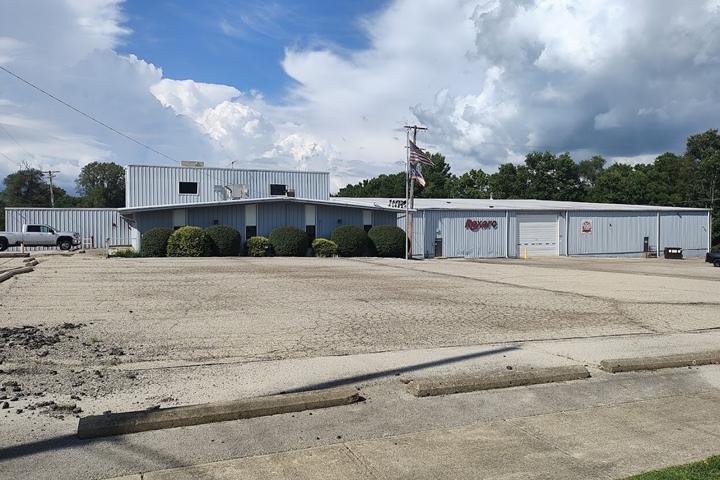
While I was writing this page in March 2024,
I was unable, due to other issues, to make the trip to western Ohio to
photograph the plant. I was finally able to personally stop by and
photograph the current Rexarc plant in early August 2024.
Author's photo added 8-6-2024.
Manufacturing was conducted in the complex
shown above. Painting and shipping were accomplished at its Eaton,
OH facility. Late in the war, this plant was contracted to
manufacture gas generator units for the U.S. Navy. There were also
two warehouses in Eaton. The facilities in West Alexandria and
Eaton, OH employed 135 workers during the war. Twenty-five office
and sales people worked out of the Richmond, IN office which was in the
Richmond Water Works building at the corner of Main and 10th Streets.
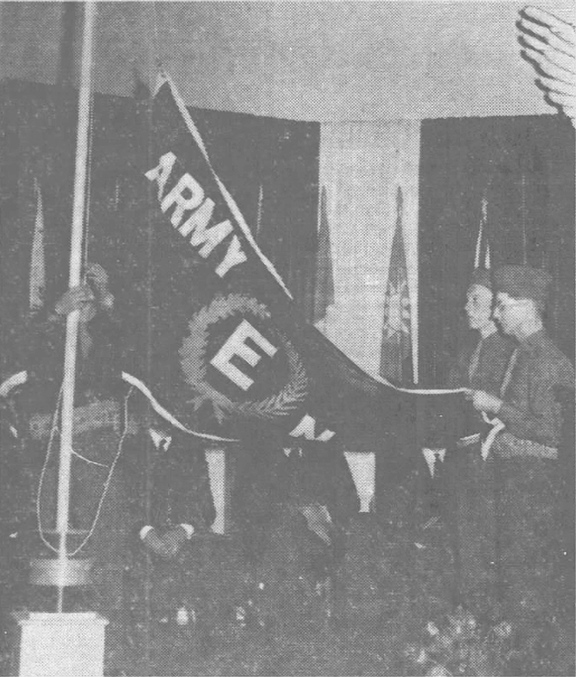
The company was awarded the Army-Navy "E"
flag on April 25, 1945. This image shows Ohio Army National
Guardsmen from Eaton, OH hoisting the E-flag at the award ceremony.
Sight Feed Generator Company World War Two
Products: The company had a total of $481,000 major contracts
to help win World War Two.
Table 1 - Sight Feed Generator Company's
Major World War Two Contracts - West Alexandria, OH Plant
The information below
comes from the "Alphabetical Listing of Major War Supply
Contracts, June 1940 through September 1945." This was
published by the Civilian Production Administration,
Industrial Statistics Division, Requirements and Progress
Branch January 21, 1946. |
|
Product - Customer |
Contract Number |
Contract Amount |
Contract Awarded
|
Completion
Date |
| Generators Gas -
Army Corp of Engineers |
203-ENG-2025 |
$61,000 |
2-1943 |
8-1943 |
| Generators - Army
Corp of Engineers |
203-ENG-2056 |
$78,000 |
2-1943 |
10-1943 |
| Oxygen Generators
- USAAF |
20017-AC-269 |
$110,000 |
9-1943 |
2-1944 |
| Electric
Generators - Army Corp of Engineers |
33015-ENG-301 |
$97,000 |
1-1943 |
11-1944 |
| Total |
|
$346,000 |
|
|
Table 2 - Sight Feed Generator Company's
Major World War Two Contracts - Eaton, OH Plant
The information below
comes from the "Alphabetical Listing of Major War Supply
Contracts, June 1940 through September 1945." This was
published by the Civilian Production Administration,
Industrial Statistics Division, Requirements and Progress
Branch January 21, 1946. |
|
Product - Customer |
Contract Number |
Contract Amount |
Contract Awarded
|
Completion
Date |
| Generator Units -
Navy |
130-XSY-21422 |
$135,000 |
8-1945 |
12-1946 |
| Total |
|
$135,000 |
|
|
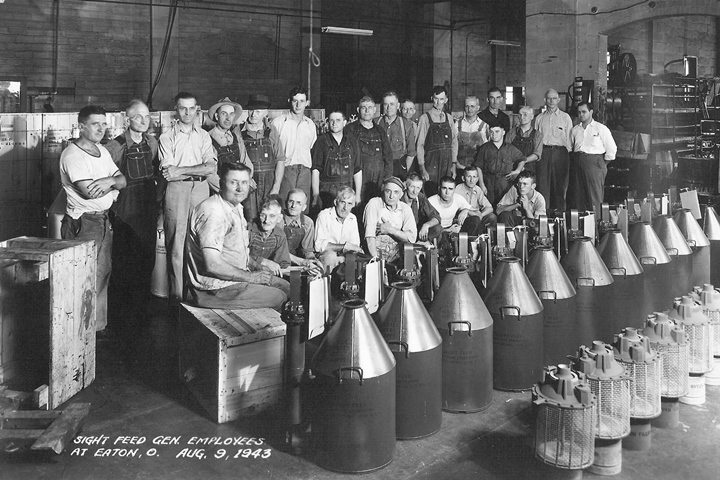
In 1943, the Eaton facility employed 24
hourly workers and two supervisors. Located in front of the
workers are the gas generators that were and still are the main product of the
company.
Examples of the Sight Feed Generator Company's
World War Two products can be found in several military and aviation
museums in the United States. Below are examples I have found in
three of those museums.
National Naval Aviation Museum, Pensacola,
FL:
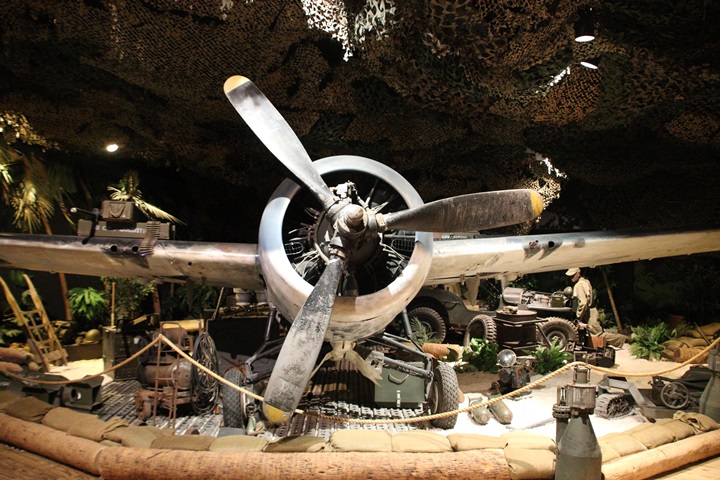
This World War Two diorama of a F4F Wildcat
undergoing repairs in the South Pacific includes four Sight Feed
Generator Company products. One gas generator can be seen in the
lower left of the photo. Author's photo.
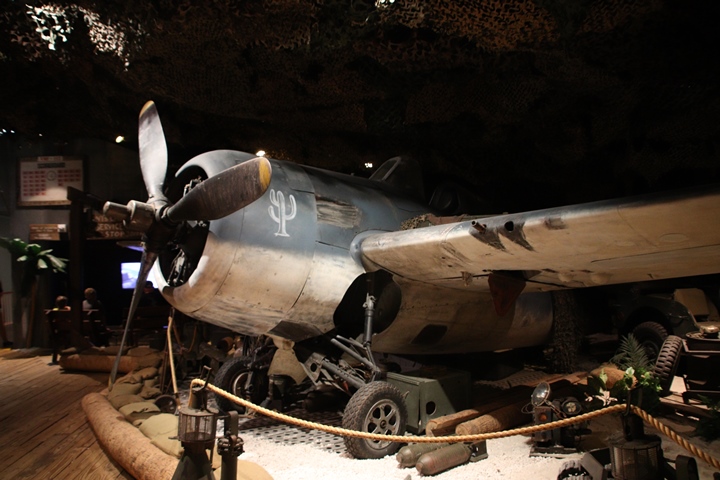
The diorama uses three generators for
stanchions to hold the rope in front of the left wing of the Wildcat.
Author's photo.
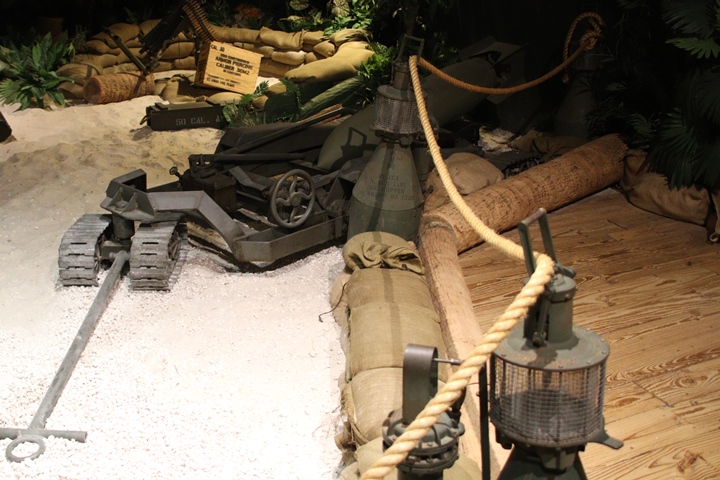
All three Sight Feed Generator Company
gas generators can be seen in this photo. Because they are being
used as stanchions, they are the easiest and most prominent artifact
besides the Wildcat that can be seen. Author's photo
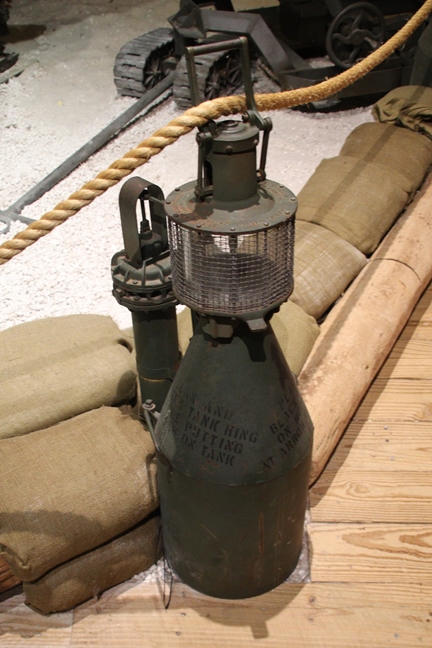
This is the one on the far left.
Author's photo.
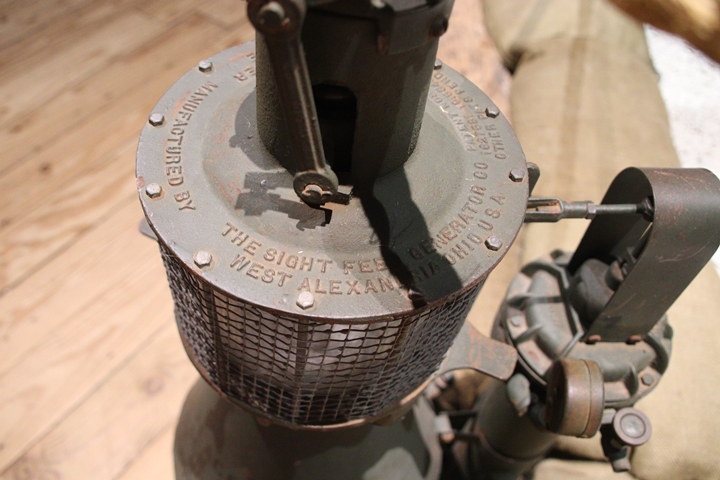
Because it is right in front of the display,
the company's name atop the carbide hopper is highly visible to the
museum's many visitors. It was this gas generator with the
company's name so prominently displayed that got me interested in
researching the company. Author's photo.
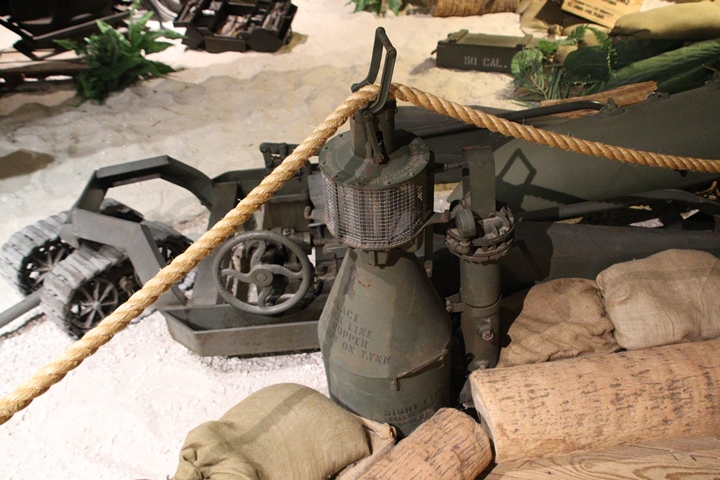
This is the middle Sight Feed Generator
Company generator that is being used to hold the rope at the display.
Author's photo.
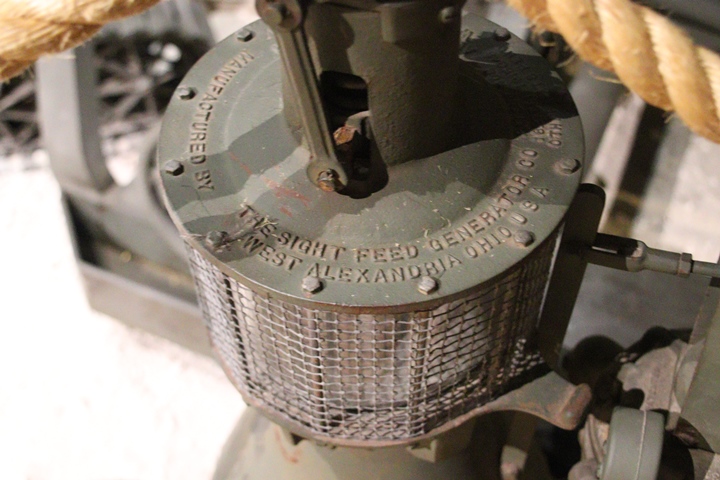
The company name is also very obvious on
this artifact. Author's photo.
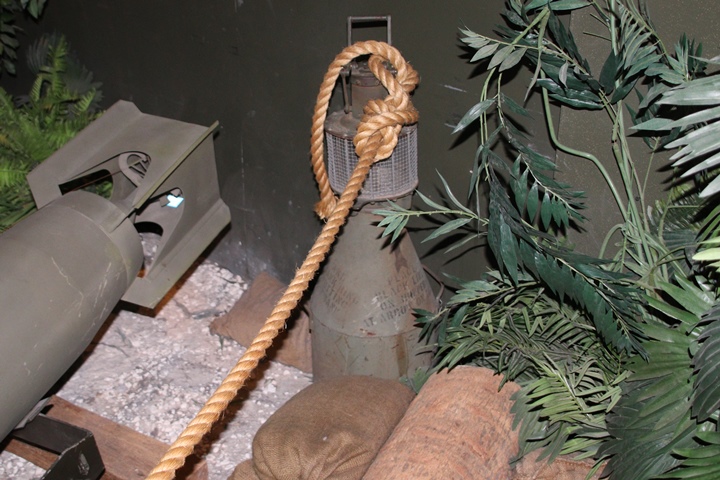
This is the third gas generator
which is being used to tie off the rope. Author's photo.
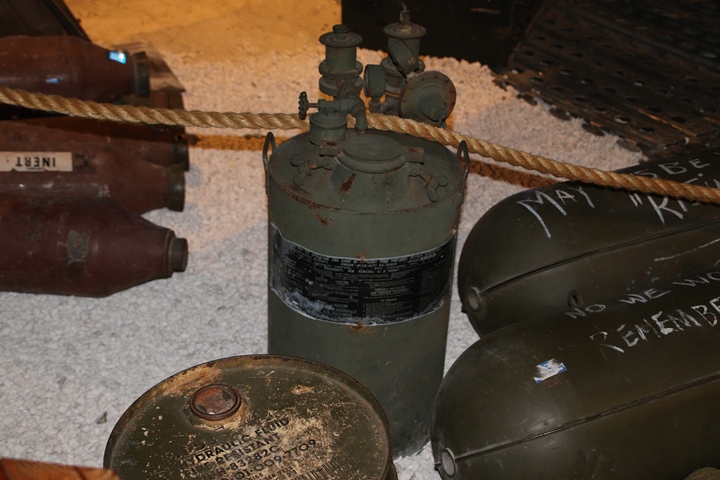
Interestingly, a Sight Feed Generator
Company-built World War Two oxygen generator is being used under the
right wing of the F4F as a stanchion. This is the only one of its
type I have found on display at a museum. Author's photo.
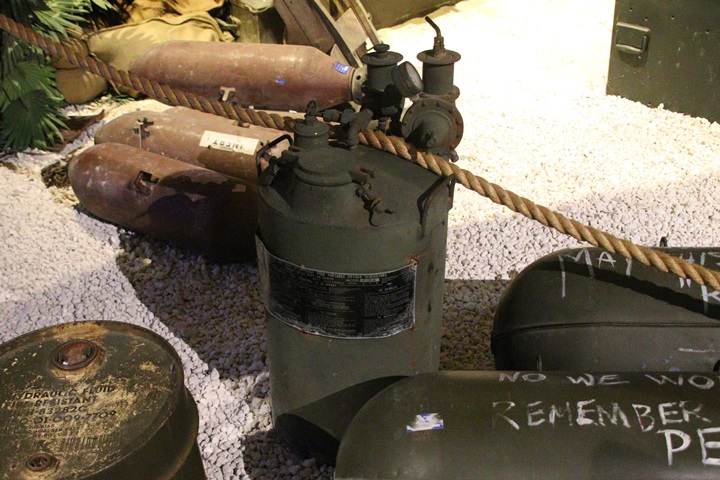
Author's photo.
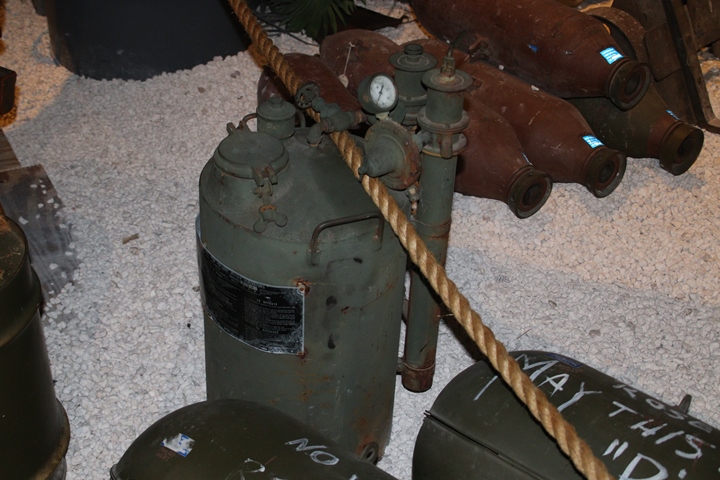
Author's photo.
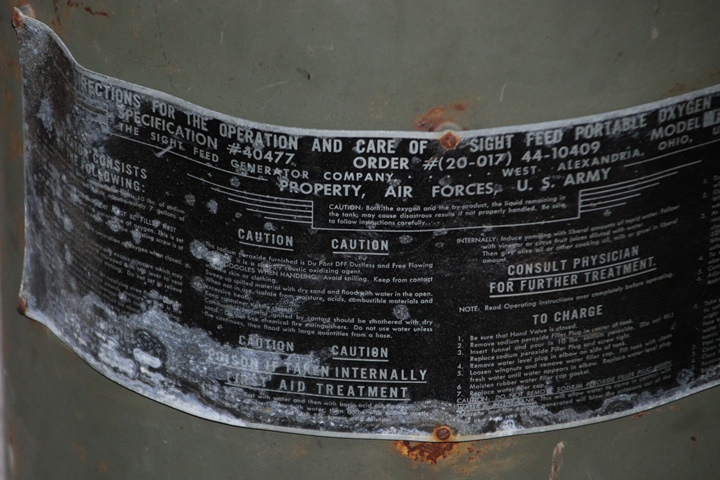
This and the image below show as much of the
data plate as could be photographed. The information shows that
this was ordered by the USAAF and was built by the Sight Feed Generator
Company of West Alexandria, OH. Author's photo.
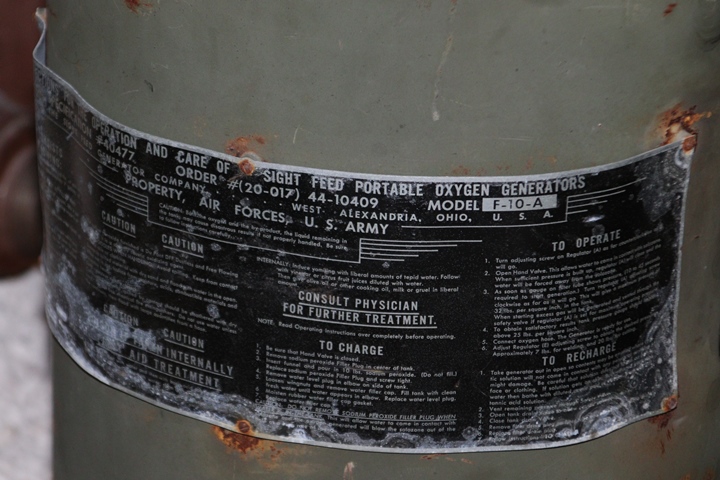
This portable oxygen generator is a Model
F-10-A. Author's photo.
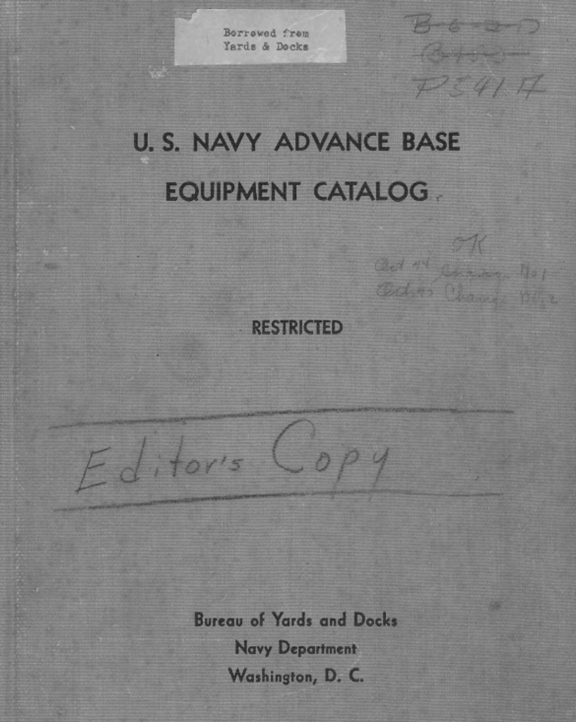
During World War Two, the United States Navy
built a larger number of bases in the Central and Southwest Pacific as
the war moved towards the Japanese homeland. The Bureau of Yards
and Docks published this catalog that listed all of the necessary
equipment required for each base. Included in the catalog is a
Sight Feed Generator Company acetylene portable generator as shown in
the next image.
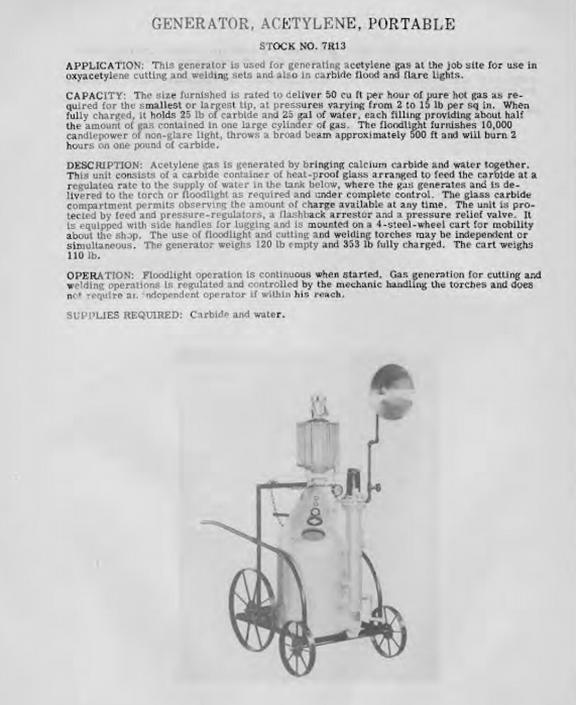
This image shows a Sight Feed Generator
Company acetylene gas generator with an adaptor for use as a flood
light. The generator and cart are very similar to the current
product produced by the Rexarc Company.
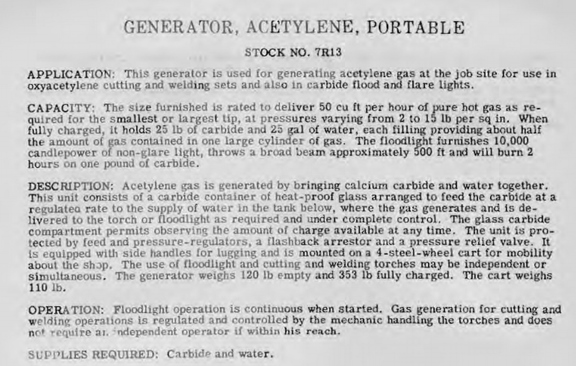
This enlarged description in the operation
section gives instructions
for use as a floodlight.
U.S. Army Heritage and Education Center,
Carlisle, PA:
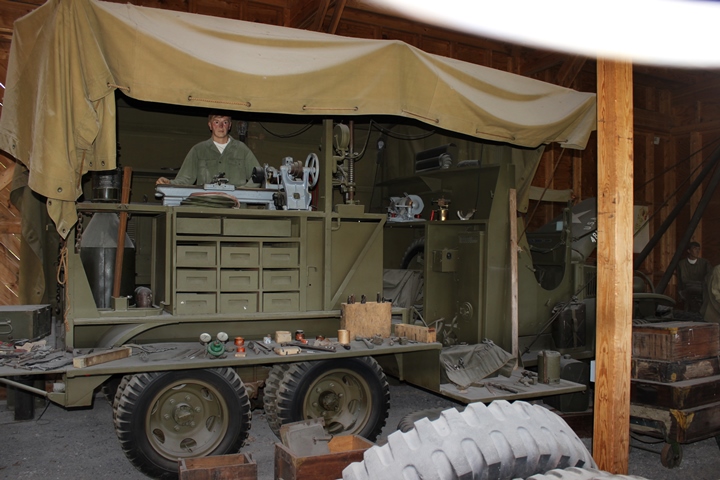
This display of a U.S. Army World War Two
maintenance truck shows a Sight Feed Generator Company acetylene
generator in the rear of the workspace. Author's photo.
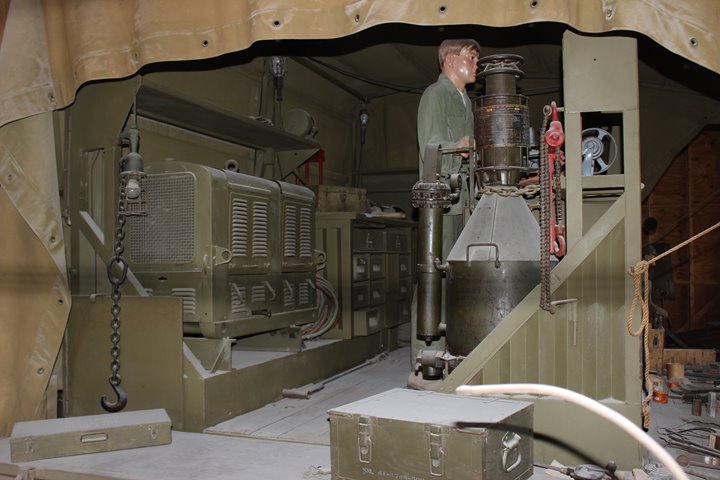
Author's photo.
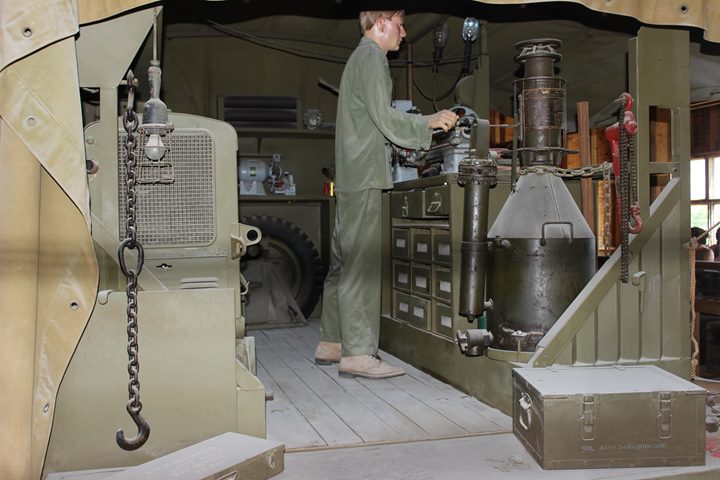
Author's photo.
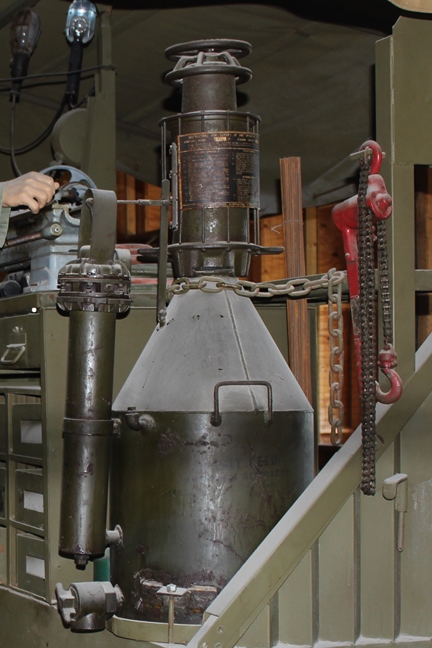
Author's photo.
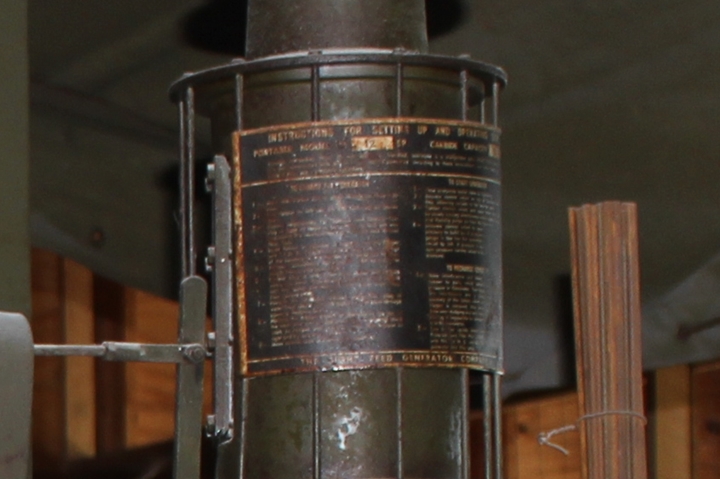
This enlargement of the previous photo shows
that this was built by the Sight Feed Generator Company. Author's
photo.
World War II American Experience,
Gettysburg, PA:
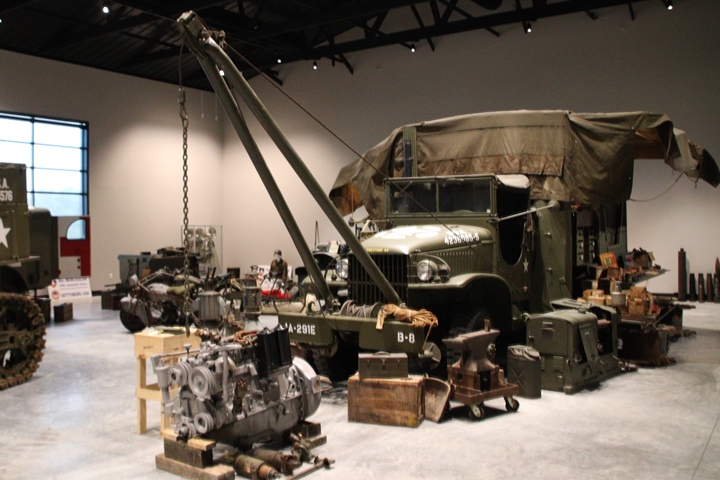
This World War Two maintenance truck display
includes two Sight Feed Generator Company-built acetylene generators.
Author's photo.
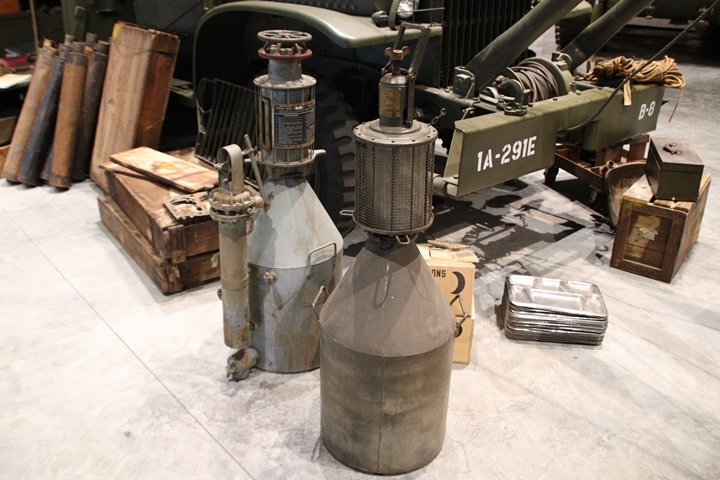
Author's photo.
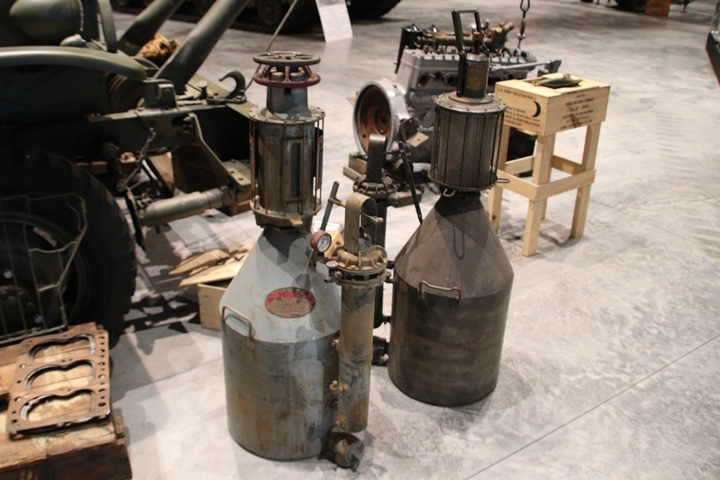
Author's photo.
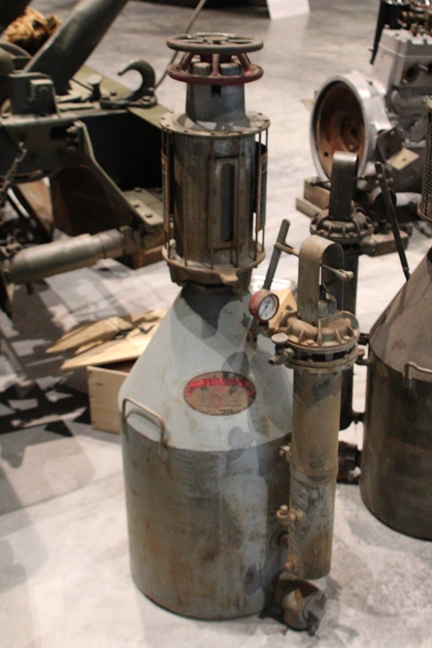
Author's photo.
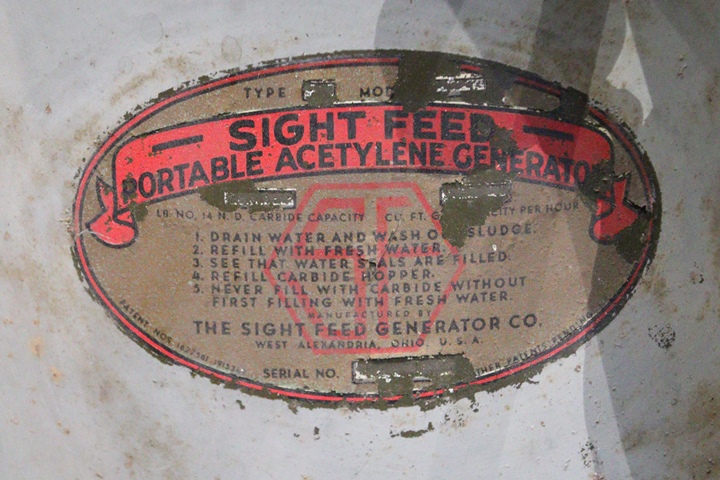
Author's photo.
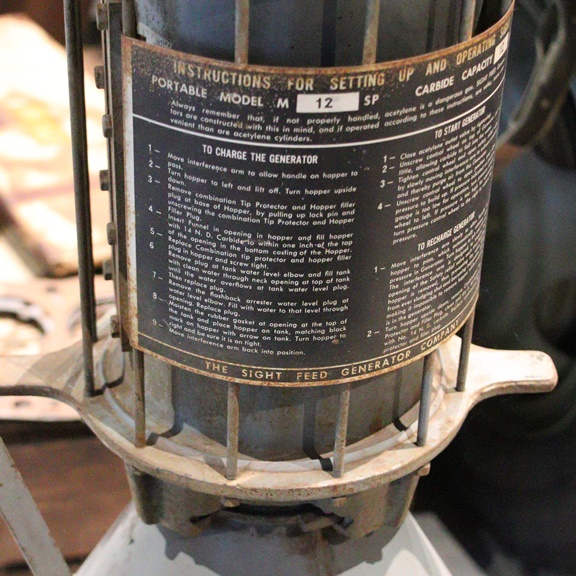
Author's photo.
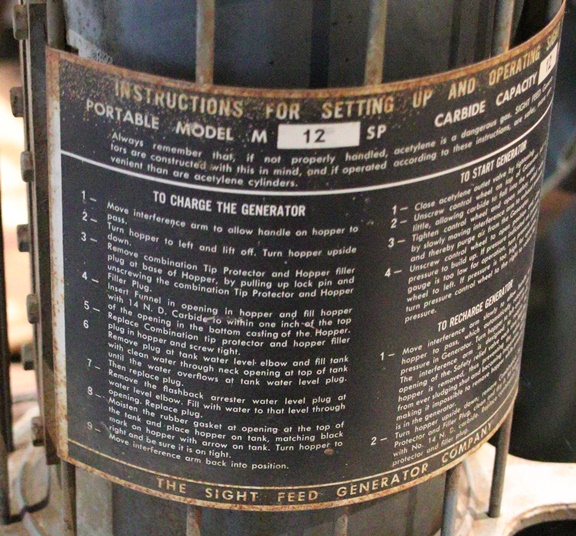
This and the next image show the
instructions. Author's photo.
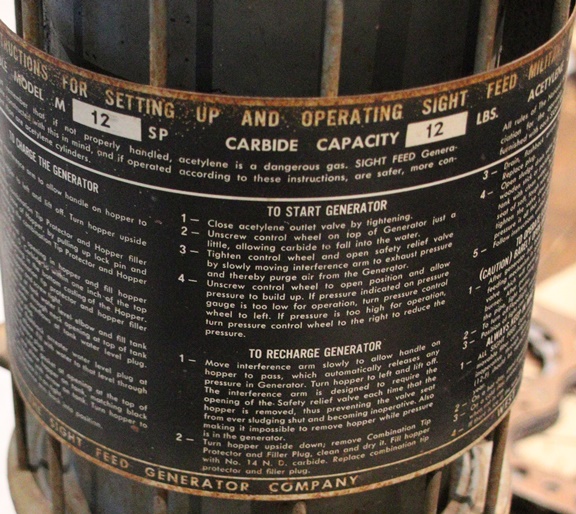
Author's photo.
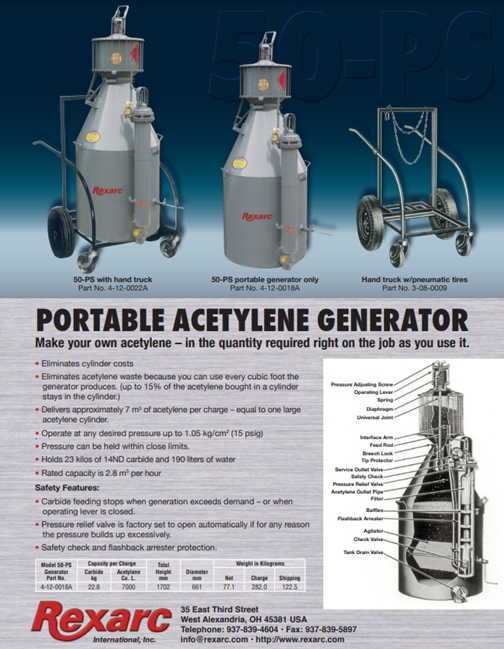
This Rexarc data sheet shows that the
current portable acetylene generator and cart are remarkably similar to those
produced 80 years ago by the company to help win World War Two.
Image courtesy of Rexarc International, Inc.
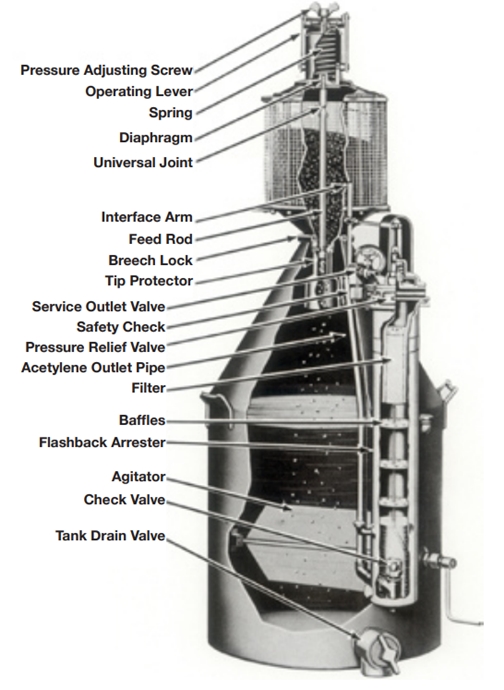
This enlargement of the data sheet shows all
of the components in the generator. Image courtesy of Rexarc
International, Inc.
The Sight Feed Generator Company Factory:
The factory has been located at 35 East Third Street in West
Alexandria since 1924. This is its 100th anniversary as I write this page in
March 2024. The buildings and the name of the company have changed
over the past 100 years, but the product line is still acetylene gas
generators.
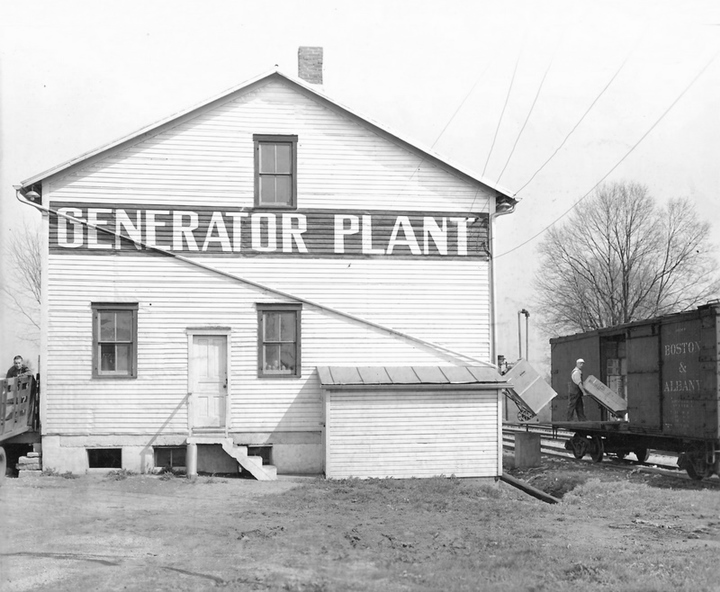
The first plant. The railway to the
east of the building allowed for shipment of the final product,as shown
here. Raw material could be brought into the plant by truck on the west
side. Image courtesy of Rexarc International, Inc.
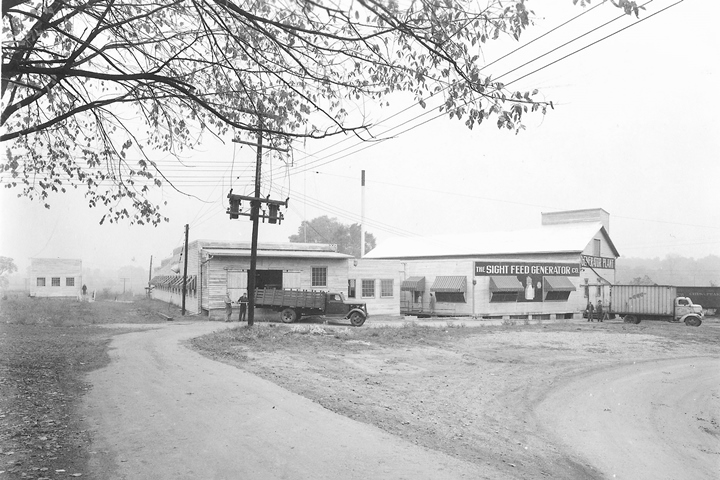
This appears to be a 1930s era photo which
shows some expansion to the west. Image courtesy of Rexarc
International, Inc.

This image is nearly the same but can be dated as the late 1930's or the
World War Two era from the cars in the parking lot. There are no
post-World War Two vehicles shown. A large new factory building
has been added to the west end of the factory complex. There is a
house in front of the new factory building along with a tree on the
south side of it. Image courtesy of Rexarc International, Inc.
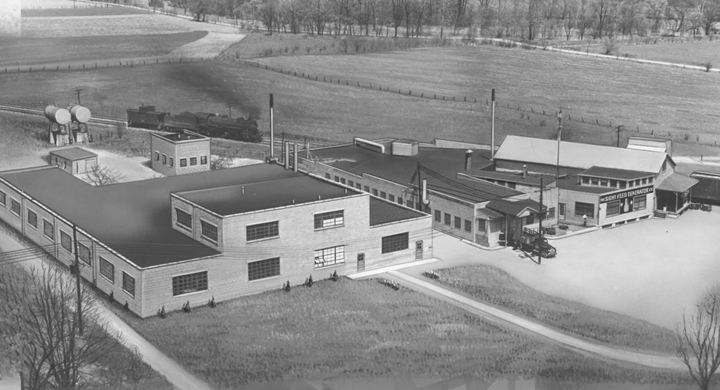
The factory complex has not changed
in this photo but the house and the tree on the south side of the west
building are gone. This is a post-World War Two era photo.
Of interest is the steam locomotive, tender, and caboose on the rail
track to the east of the factory complex. This would date this as
a 1950s era photo. Note the configuration of the building on
the left. Its shape can be seen in the current satellite view
below. Image courtesy of Rexarc International, Inc.
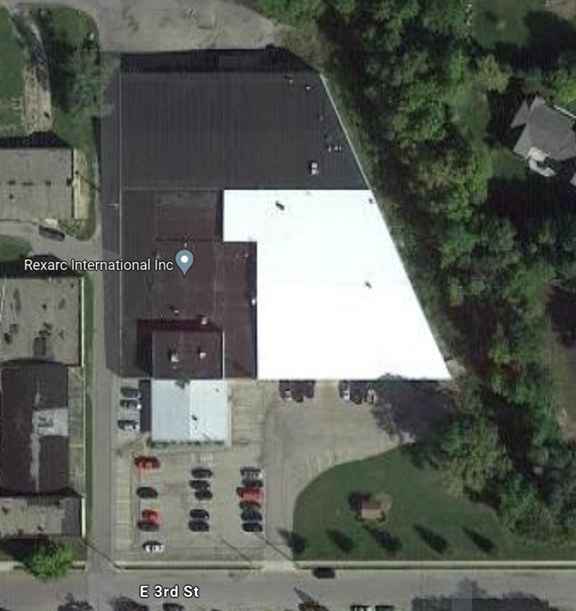
The satellite view shows the roof line of
the building from the above photo. A building for office space has
been added to the south of this building. Also, there is an expansion to
the north of the current factory complex. The several separate
buildings that were on the east side have been replaced by a new
structure. This is the building with the white roof. Image
courtesy of Google Maps.

This image shows the current Rexarc factory
complex located at 35 East Third Street in West, Alexandria, OH.
Image courtesy of Google Maps.
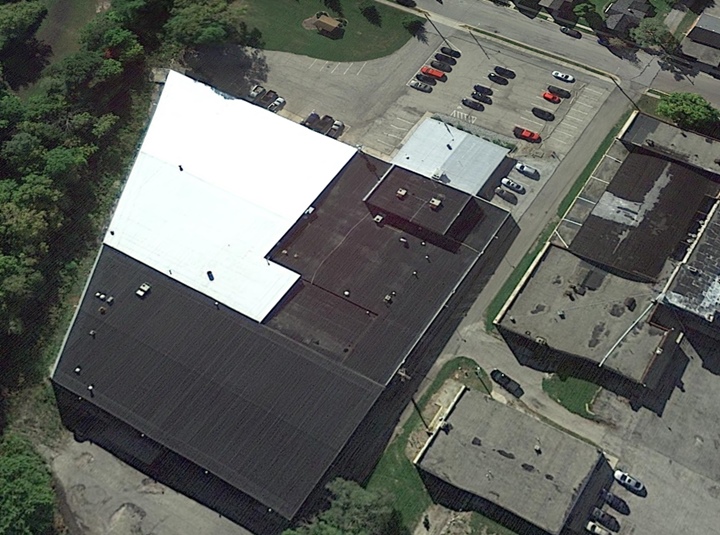
This image gives another view of the current
factory. The village of West Alexandria, OH has a current
population of 1,334. For the past 100 years, this factory has been
an important business to the local population and provided several
generations of local residents with jobs. In 1924, the company
only had four factory employees. During World War Two, it had 135.
Image courtesy of Google Earth.
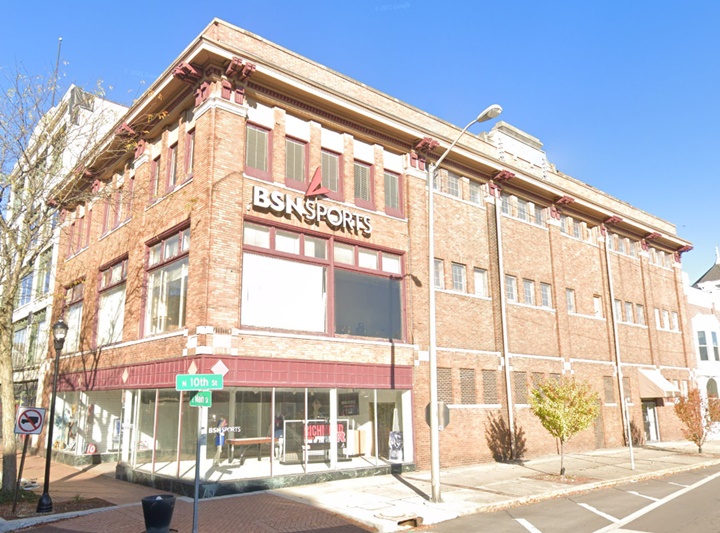
During World War Two, this was the location
of offices of the Richmond Water Works in Richmond, IN.
On the second floor, the Sight Feed Generator Company rented floor space
for 25 office and sales personnel. Image courtesy of Google Maps.
Patent 1,915,349: This 1933
acetylene gas generator patent was assigned to the Sight Feed Generator
Company.
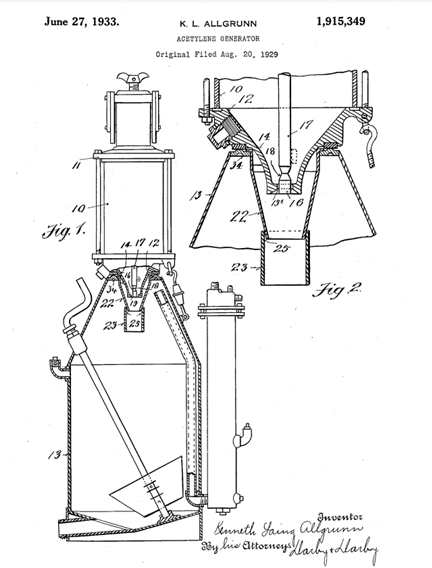
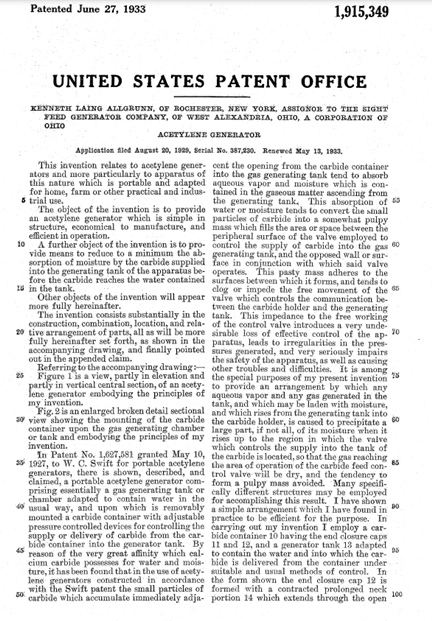
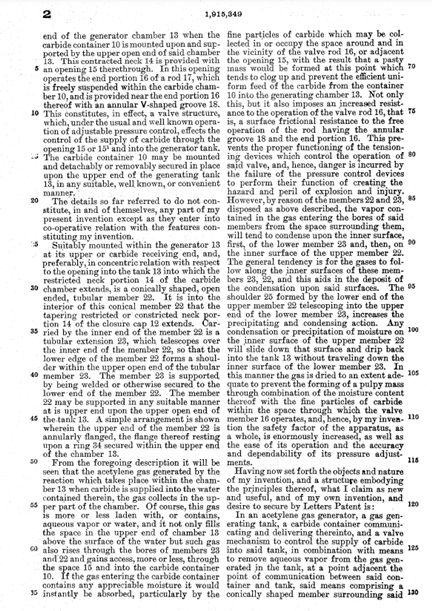
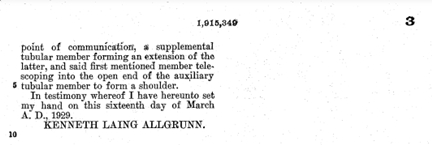
Patent 2,367,240: The company's
owner, Carl Smith applies for this patent on June 27, 1940. The patent was awarded on January 16, 1945.
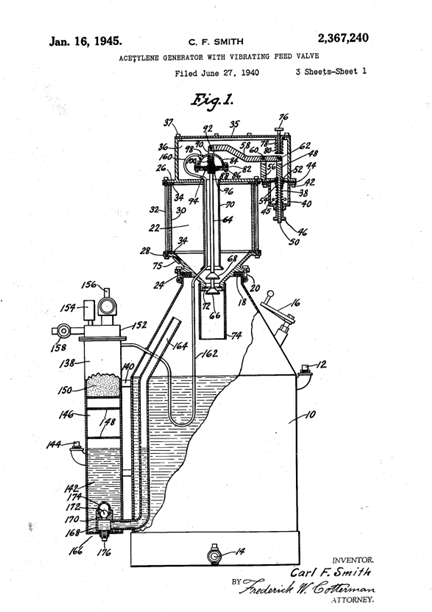
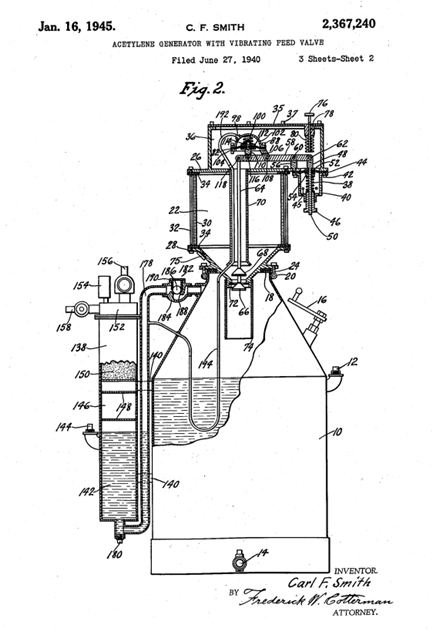
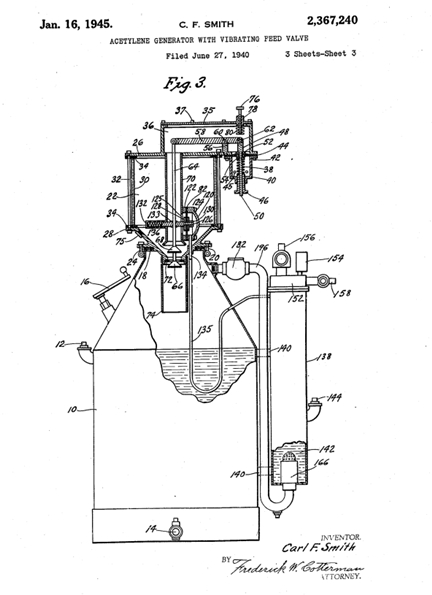
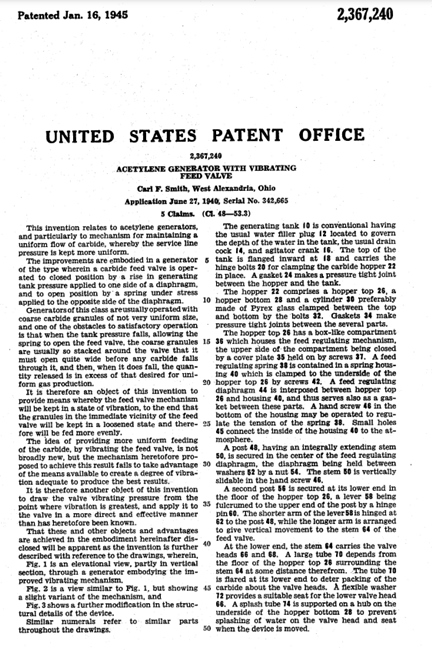

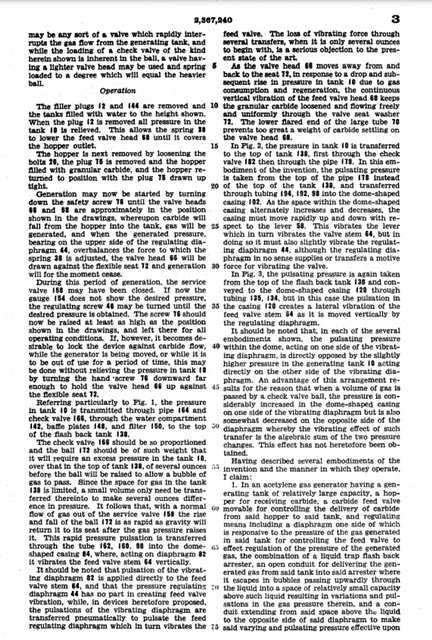
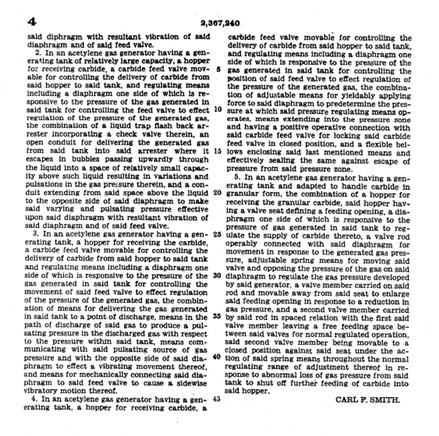
|




















































